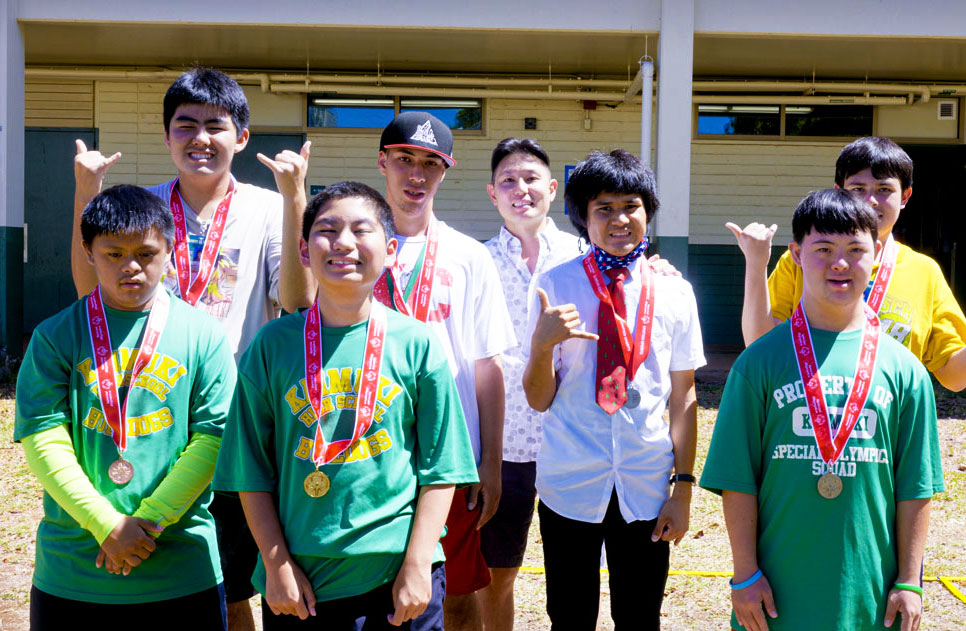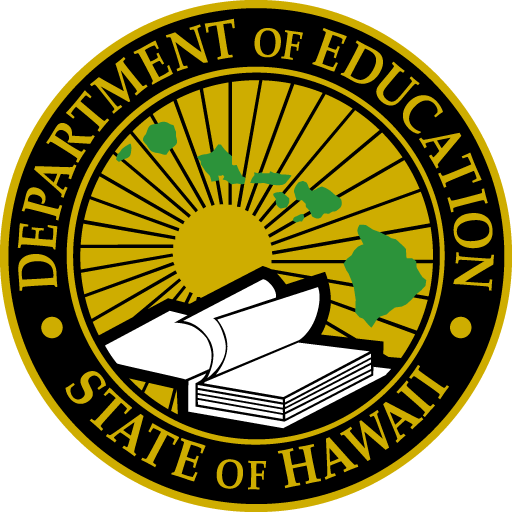The Hawaiʻi State Department of 교육 (HIDOE) provides services to children ages 3 through 21, residing in Hawaiʻi, who are eligible for 특수교육 및 관련 서비스. Special education is specially designed instruction, related services, and other supplementary aids to meet your child’s unique needs—at no cost to parent(s).
개요
Special education refers to a range of services provided your child with disabilities to improve their educational outcomes. It is specially designed instruction to meet the unique needs of your child with disabilities. Special education may include, but is not limited to, academic services, speech-language services, psychological services, physical and occupational therapy, counseling services, and parent education. In addition, 특수교육 services are provided at no cost to parent(s). Find out if 특수교육 Is For Your Child (PDF).
Special education services are made available to any student — ages 3 through 21 — who demonstrates a need for specially designed instruction after an eligibility determination. An evaluation will determine the nature and extent of the student’s needs. Evaluations are separate assessments that may include: academic performance, communication skills, general intelligence, health, vision, hearing, social and emotional status, and motor abilities. If your child is eligible for 특수교육, services are provided through an Individualized 교육 Program (IEP).
The federal Individuals with Disabilities 교육 Improvement Act of 2004 (IDEA) and state regulations require the HIDOE to provide a free appropriate public education (FAPE), which includes a continuum of services for your child who is eligible for 특수교육 및 관련 서비스.
평가 및 자격
Special education is intended for students who have disabilities that cause difficulty in learning and need specialized instruction.
Evaluation is defined as the procedures used to determine if your child has a disability and the nature and extent of the need for 특수교육 and related services. This process helps identify learners who are eligible for 특수교육 and related services by determining the presence of a disability and the need for 특수교육 services. There are specific timelines that teams must follow for the evaluation process.
Appropriate referrals for 특수교육 begins after supportive instructional practices have occurred and the student needs far more than the classroom teacher can provide through general education support. For example, a student who has significant academic and/or behavioral challenges and continues to display a lack of progress despite increasing levels of intervention.
Determination of Disability for 특수교육
팀은 다음을 수행해야 합니다.
- 평가를 실시하다
- 3가지 테스트를 완료하세요
- Consider your child’s educational progress and the interaction between the disability
- Determine the educational impact of that disability
- Decide the need for 특수교육
This important distinction highlights that the disability label alone does not prompt a determination of eligibility for 특수교육. In the context of 특수교육 eligibility, the disability label has no standing without reference to impaired educational progress as a result of the disability.
3가지 테스트
Each prong must be met before the team can determine that if your child is eligible for 특수교육.
- 1번 갈래: 장애 – 귀하의 자녀에게 장애가 있습니까?
- 2번째 갈래: 부작용 – Is the disability adversely affecting your child’s involvement and progress in general education?
- 3번째 갈래: 필요 – Does your child need 특수교육 and related services due to their disability?
Individualized 교육 Program
An Individualized 교육 Program (IEP) is a written statement about the educational program for your child with a disability. It serves as a management tool to ensure that your child receives the needed 특수교육 and related services. It can also serve as an evaluation tool when used to determine the extent of their progress toward accomplishing projected goals.
각 IEP에는 다음이 포함됩니다.
- A statement of your child’s present levels of academic achievement and functional performance
- 단기 교육 목표를 포함한 연간 목표에 대한 진술
- A statement of the specific 특수교육 and related services to be provided
- The extent that your child will be able to participate in regular educational programs
- 서비스 시작을 위한 예상 날짜 및 서비스 예상 기간
- 최소한 연간 기준으로 목표가 달성되고 있는지 여부를 판단하기 위한 적절한 객관적 기준 및 평가 절차 및 일정
Beginning at age 14 (or younger if determined appropriate by the IEP team), the IEP shall include a statement of the transition service needs of your child—under the applicable components of the their IEP—that focuses on their courses of study (such as participation in a vocational educational program).
자녀가 16세가 되는 시점(또는 IEP 팀에서 적절하다고 판단하는 경우 더 어린 나이)에 발효되는 첫 번째 IEP부터 IEP에는 다음이 포함되어야 합니다.
- 연령에 적합한 전환 평가를 기반으로 한 적절한 측정 가능한 고등교육 목표
- 학생이 목표를 달성하도록 돕기 위해 필요한 전환 서비스(학업 과정 포함)
- 자녀의 개별적인 필요에 기반한 연령에 적합한 전환 평가는 적절한 측정 가능한 고등교육 목표를 결정하는 데 사용됩니다.
- 자녀가 주법에 따라 성년이 되기 최소 1년 전(하와이의 경우 18세)부터 학생이 IDEA B 부분에 따라 권리를 통보받았다는 내용의 IEP가 포함되어야 하며, 해당 권리는 자녀가 성년이 되면 자녀에게 이전됩니다.
다음은 참가자는 IEP 회의에 참석해야 합니다(PDF):
- A representative of the public agency, other than your child’s teacher, who is qualified to provide, or supervise the provision of, 특수교육
- The child’s teacher
- 부모/법적 보호자 중 한 명 또는 둘 다
- 해당되는 경우 귀하의 자녀
- 부모 또는 기관의 재량에 따른 기타 개인
IEP 회의
IEP 회의는 최소한 1년에 한 번은 열어야 합니다. 자녀의 필요와 진척 상황에 따라 검토 및 수정 회의가 더 자주 열릴 수 있습니다.
IEP 회의는 일반적으로 학교에서 시작하고 진행하지만, 자녀의 진도가 만족스럽지 않거나 현재 IEP에 문제가 있다고 생각될 때 부모가 IEP 회의를 요청하는 것이 적절합니다.

제 아이에게 장애가 있나요?
어린이 찾기 is HIDOE’s process of identifying, locating and evaluating children and youth who have been identified as or are suspected of having a disability and may need 특수교육 and related services. If you suspect your child may have a disability, we are here to help. 더 알아보기
